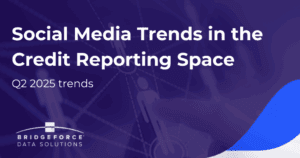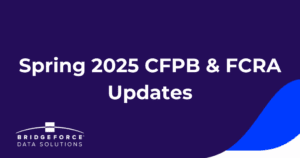We hear it time and time again. Business leaders tell us:
- “We don’t have the information we need.”
- “Our IT and Analytic partners don’t understand our business.”
- “It will take months to get that new report.”
The Analytic and IT teams will tell us:
- “The business doesn’t give us the right requirements.”
- “The business can’t explain what they want to do with the data they’re asking for, they just say ‘give us everything’.”
The problem – they’re all right. In the fight for information and resources, the natural inclination for business leaders is to leap to requesting reports and metrics – to get in the queue. The data partners are inundated with these requests from all angles, swamped by ever-growing data needs, and further slowed by incomplete requirements.
A Better Approach – Start with the End in Mind
Data alone cannot fundamentally change your business. Data can inform the decisions you will make to evolve your business. Therefore, starting with data requirements, before you understand your decision levers, is a recipe for failure.
Start with the end in mind. “What is the goal I am trying to accomplish?”. These Strategic Goals will be the foundation for the actions you intend to take. Be specific with your targets, including your measures and timeframes. Examples include:
- I want to increase new loan originations by 5% this quarter
- I want our customer satisfaction scores to average 97% next month
- I want our net chargeoff rate to drop by 10bps this year
The fundamental question that follows – “What can I do today to make tomorrow different?”. The actions you can take to execute changes are your Decision Levers. Let’s take the example of a Collections Manager. Their decision levers may include:
- Prioritizing which accounts are sent to a dialer for outbound calling
- Deciding which accounts go to collections agencies vs. staying in-house
- Setting the criteria for settlement offers (this is the example we will follow through)
There’s little reason to expend time, energy, and resources to build reporting around those things you cannot change. By focusing on your decision levers – you will naturally prioritize the critical knowledge that will inform your strategies.
Now, ask yourself “What could happen if the action I take is wrong?”. The range of consequences for your choices are your Decision Tradeoffs. Let’s follow through with Settlement Offers. My tradeoffs could be:
- If my offers are too generous, then customers that could pay me as agreed may take a settlement instead – increasing our losses.
- If my offers aren’t strong enough, then customers that may have paid me a portion of their balance owed will instead roll through to a full chargeoff – increasing our losses.
We use these tradeoffs to inform what needs to be measured to ensure decisions keep you within your guardrails.
Finally, ask yourself “What would I want to be able to measure to see if my decisions are working?”. These Key Monitoring Metrics will allow you to understand if your decisions are having the desired effect, and if you are staying within the sweet spot of your Decision Tradeoffs.
At this point, define the metrics in plain English terms:
- What you would like to measure
- Why the measure is important
- Where the data may come from
Following through on the Collections Settlement example, some of the Key Monitoring Metrics could include:

The goal at this stage isn’t to solve for the actual reporting you will need. Now though, you will be able to communicate your needs and requirements in a way that will facilitate understanding at all levels of the organization – including with those partners that will be supporting you in building the reporting you need to meet your Strategic Goals.
The process described here is the first of many steps to begin laying the foundation for a robust experimental design process supported by unified Business Intelligence. If you’re finding challenges bridging the gap between your data needs and capabilities – we’re here to help.



